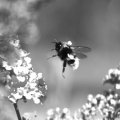A University of Queensland academic has written the first biography of influential 19th Century feminist and pioneer of child emigration to the British colonies Maria S Rye.
History Department Associate Professor Marion Diamond's third book entitled Emigration and Empire: the Life of Maria S Rye (Garland Publishing Inc.) examines Rye's instigation of the emigration of 600 women from England to British colonies such as Australia, New Zealand, South Africa and India and 4000 children to Canada between 1861 and 1896. Rye was the first person to arrange child emigration, a role then taken up by Thomas Barnardo and others.
"Rye spent two years in New Zealand and 18 months in Australia visitng Sydney, Brisbane and Melbourne in the 1860s. She complained about the conditions at the then Brisbane Hospital and the Sydney Lunatic Asylum in letters to authorities. She was so appalled at the conditions for 30 orphans in the Brisbane Hospital (whose parents had died on the ships over to Australia), she moved them to a specially outfitted building and promptly bathed them all herself," Dr Diamond said.
Rye was a good example of the ambiguous nature of some 19th Century feminists - on the one hand she strove to get better jobs and conditions for women but achieved this through conservative solutions such as emigration to the colonies as domestic servants, Dr Diamond said. "While many women made successful marriages or became governesses and teachers, a large minority ended up being abused, having children out of wedlock or entering prostitution," Dr Diamond said.
There were also many sad stories surrounding the migration of workhouse infants as young as three including physical and sexual abuse at the hands of their new Canadian masters. However, many of the so-called "gutter children" were saved from lives of dire poverty and abuse through emigration, Dr Diamond said.
"Rye believed right until the end of her life in 1903 that the practice had been beneficial in raising the status and prospects of these children, most of whom were girls. Without formal education, financial security or parental support, she carved out a career as a professional philanthropist. In her day, she was a hero to the middle classes and it is easy to judge her harshly with the benefit of hindsight ," Dr Diamond said. "However, unlike fellow famous Victorian women such as Caroline Chisholm and Florence Nightingale, she was almost completely forgotten within a generation."
Dr Diamond said she was attracted to the subject many years ago when her father, a doctor, had been researching the history of the Royal Brisbane Hospital and came across Rye's complaints. "Rye was the eldest of nine children to a Chelsea lawyer and his wife. She never married, preferring to play ?big sister to everybody'. Nearly six-feet-tall, she was very fit, travelling to Canada once a year for 30 years which was an arduous process in those days."
For more information, contact Associate Professor Marion Diamond (telephone 07 3365 6334).



